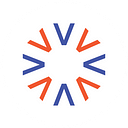Crowdsourcing can influence innovation. According to a 2017 survey, 86% of companies who incorporate crowdsourcing in the workplace cite employee engagement as a top priority. This gives everyone an opportunity to share ideas about the issues that affect them.
Data gathered from IdeaScale’s innovation communities provides benchmarks and insights for innovators creating new crowdsourced innovation programs. It answers questions such as:
- How many resources will they need?
- What sorts of results can they expect?
- Which stages will prove most intrinsic to program success?
- What more can they learn from IdeaScale’s network of innovators?
What the Numbers Tell Us
IdeaScale has put together an infographic showing crowdsourced year-in numbers for 2020. The global COVID-19 pandemic affected all organizations, creating many crowdsourcing opportunities. Here’s what the numbers tell us.
During 2020, an average of 114 ideas were submitted to IdeaScale each day. The platform averaged 3500 ideas per month.
March proved the busiest month due to the COVID-19 pandemic. While everyone was forced into lockdown, businesses had to find new ways to reach customers. Many employees began working remotely, which meant using technology to attend meetings, collaborate on ideas, and sell products.
In 2020, 35% of IdeaScale customers ran COVID-related campaigns. They were designed to find solutions ranging from healthcare innovation to pandemic issues.
Companies used their resources to manufacture ventilators, face masks, and other PPE equipment. Other organizations used technology to create unique virtual customer experiences.
Understanding IdeaScale Campaigns and Stages
IdeaScale customers launch, on average, 5.18 campaigns each year. There is an average of 2.5 moderators for each campaign and eight global moderators per community. This opens up many possibilities for organizations looking to innovate both internally and externally.
Campaigns include changing organizational processes, reaching out to customers for product ideas, and involving communities to better serve their members. This average number of campaigns demonstrates the power of technology and how collaboration changes lives.
IdeaScale has also ranked its stage templates according to frequency of use. The top four are:
- Ideate
- Refine
- Reserve (archive or implemented)
- ReviewScale
The ideation process is critical because it’s where ideas are first shared. People come together to brainstorm and collaborate, which leads to campaign creation.
After ideas are shared, they must be refined. This involves selecting the top ideas for consideration and prioritizing them.
Some ideas are placed in reserve. They are either archived for later use or implemented in a future campaign.
Campaigns must be reviewed to determine their success. Companies can use this information to find more ways of sharing and implementing ideas.
IdeaScale campaigns attempt to solve a variety of problems. These range from overcoming product challenges to improving the customer experience.
Crowdsourced innovation is changing how companies do business. It helps organizations increase customer outreach while regularly assessing business processes.
In 2021, innovation will continue shaping the business landscape through the use of technology. As shown in a recent study, 77.3% of CIOs say digital transformation is their organization’s top priority. This means employees will continue to work remotely, and customers will grow even more accustomed to new ways of acquiring products and services.
Want to see the numbers for yourself? Download the IdeaScale infographic today.
Schedule now for a free 30-minute consultation to learn more about IdeaScale’s solutions.
This article was originally published on the IdeaScale blog here.
